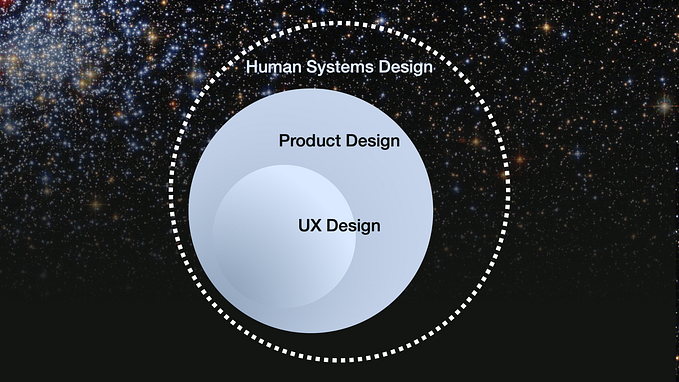Ways to add perspective in design
Three design methods for a more comprehensive practice

Designers often feel drawn to first ideas. These impulses can be short-sighted and interrupt our sense-making efforts. They throw us into the solution space too early, with a superficial understanding of the problem.
Unsurprisingly, this can lead to myopic design–narrow in vision and shallow in value. Having fallen into that trap a number of times myself, I started to experiment with different ways to foster depth and perspective. A combination of the methods below have become my go-to recipe.
Participatory design
Key stakeholders can contribute with framing. During ideation and prototyping, a QA Engineer may explore ways to manage cognitive effort and memory. A Product Manager might advocate for a particular scenario. A Support Expert may ensure that proper guidance is in place. Different participants contribute with different angles.
Participatory design with users further amplifies perspective, in particular during evaluative research. One exercise worth trying is to ask “What would you expect to happen if you do that?” or “Can you describe what happened?” when guiding users through a prototype. Responses often help understand the customer’s mental model, which may be useful to accommodate for in your design.
A rule of thumb to facilitate participatory design is to release control of the solution-making process. We should leave our ego at the door and separate ourselves from our ideas. Doing so provides a safe space for others to step in, which is particularly relevant when running co- and pair-design sessions.
Parallel prototyping
Another way to stimulate perspective is to maximise the number of intersecting or complementing ideas to prototype and evaluate. When related ideas and their intersections become exposed with parallel prototyping, new connections become apparent.
I recently worked on an initiative to improve how editorial teams collaborate to drive the quality of their content. One way of exploring the underlying human interactions within these teams was to evaluate different ways of achieving their tasks.
We combined multiple interlacing ideas for comments, reviews, ways of subscribing to content, email and in-app notifications, history of content changes, etc. Some of these ideas were laid out in a click-through prototype, while others were only verbally introduced in open conversations.
The outcome was astonishing. We uncovered unforeseen implications and causal relationships that wouldn’t otherwise be revealed if we evaluated a single idea in isolation.
Secondary research
One other way to widen perspective in design is to draw upon research that is already available. Learnings from relevant user interviews, insights from related projects, journey maps, personas, and other research initiatives may help paint a more accurate picture of the problem space.
It’s important that all research is documented and accessible, otherwise it may be hard to be referenced and therefore not useful when supporting decision-making.
Poking holes
These design methods aren’t perfect. One drawback is the risk of groupthink and design by committee, since more people are involved in the process of ideation. One other catch is the focus required to evaluate a prototype with such a variety of intersecting ideas.
These design methods should complement your user research. They are a way to develop a practice that’s wider in angles and perspectives, more extensive in exploration, and more aware of existing learnings.







